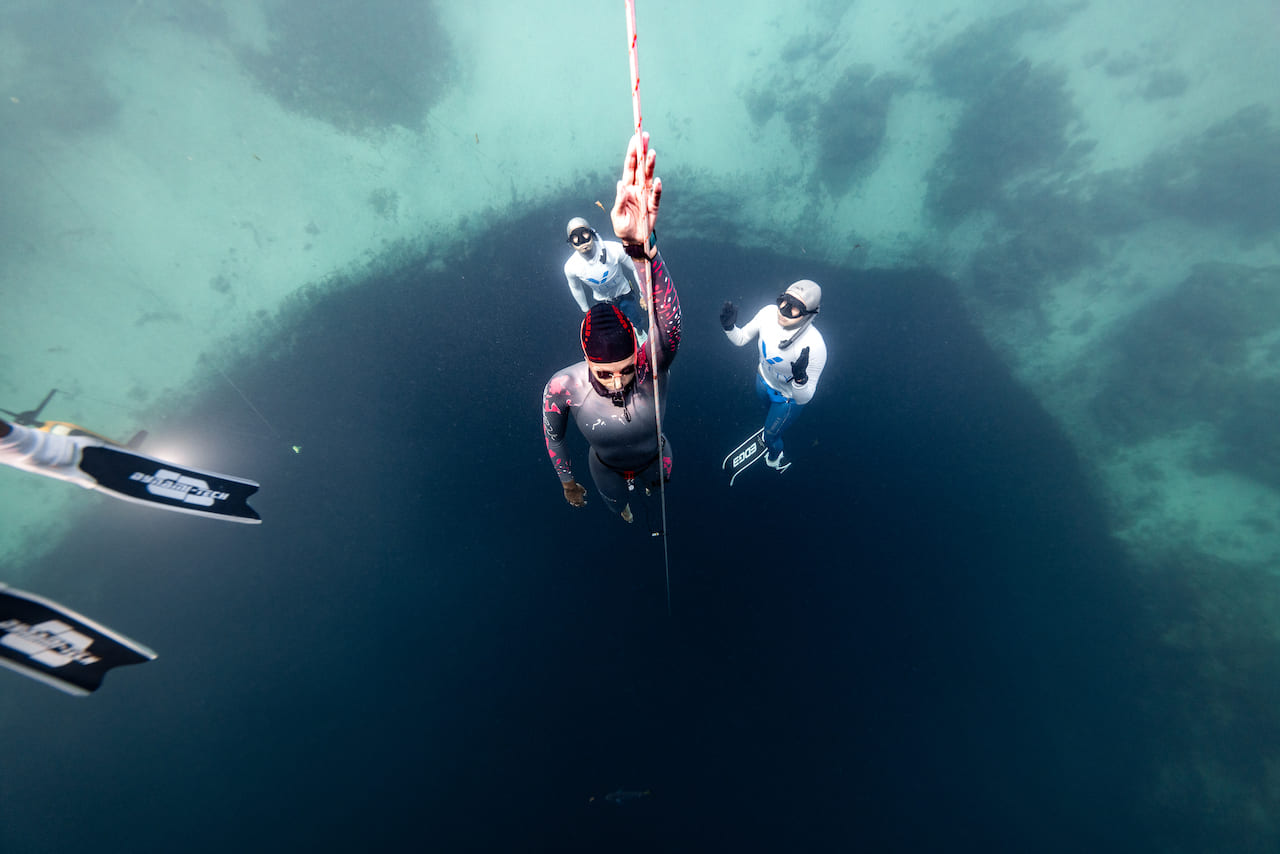There are 3 types of breath holding sports :
- deep freediving, carried out at sea, where only depth counts
- dynamic apnea, where it is the distance that matters
- static apnea, where there is no movement and time defines performance.
Each one is very different from the other but they have one thing in common : pushing your limits while holding your breath.
The one I practice is depth, because it gives me feelings that I don’t find anywhere else. It is divided into 4 different disciplines: monofin, bifins, free immersion and no fins. It is only in free immersion that we have the right to use the cable.
In any case, unlike the film « The Big Blue » by Luc Besson, there is neither a weighted platform (which would help us to descend), nor an air balloon (which would help us to ascend). The weight you carry must be brought back up: this is why the disciplines are called Constant Weight.
To descend safely and to cope with the increase in pressure, ear equalization is fundamental and lung acclimatization essential. The training therefore focuses as much on physical preparation, tolerance to the CO2 increase, as on thoracic flexibility, work on the ENT sphere, and mental preparation.
During a dive, we descend alone and are not accompanied by scuba divers. However, during the ascent, safety divers (also on breath hold) accompany us for the last 30 meters, ready to react in the event of a problem. Indeed, thanks to the laws of physics and physiology, there are normally no accidents at depth. On the other hand, the last meters of the ascent are the place where hypoxia can manifest itself and that is why our guardian angels meet us there!

